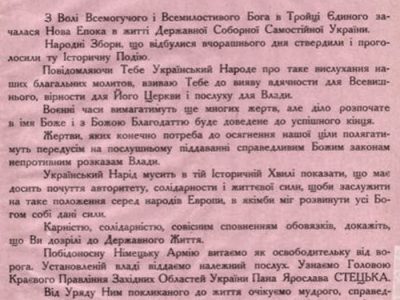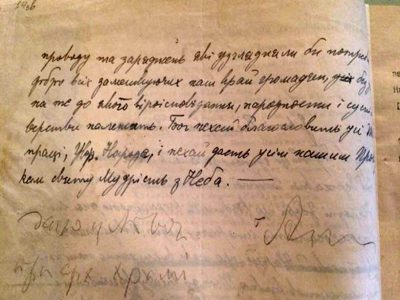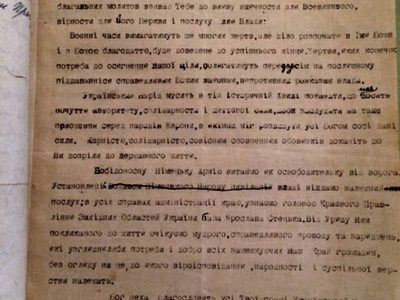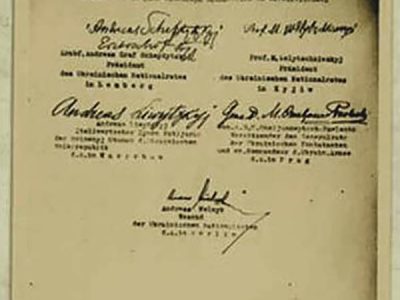Metropolitan Andrei Sheptytsky and the Holocaust: new documents and new interpretations of historical contexts
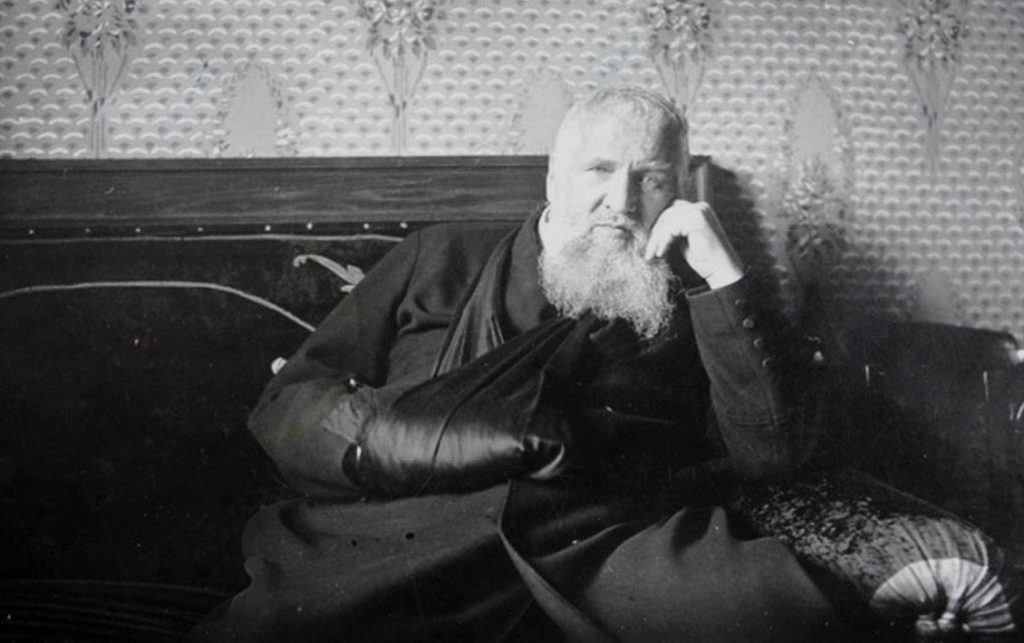
During the Second World War, Count Andrei Sheptytsky, the metropolitan of the Ukrainian Greek Catholic Church (UGCC), rescued approximately 100–150 Jews, both adults and children. This well-known fact figures in numerous scholarly and semi-popular books about Metropolitan Sheptytsky and the history of the Holocaust. Our knowledge of this aspect of the metropolitan's activities is quite limited. We do not know all the names of those who were rescued, nor do we possess accurate data on what and how the metropolitan did in order to rescue Jews. Most likely, we will never know. However, it is important to obtain reliable knowledge of this aspect of the metropolitan's life and of the greatest tragedy of the twentieth century: the Holocaust of the Jewish people. The success of reconstructing the past and its scale and diversity depends on the source base. For a historian, written documents of an epoch are crucial. No less important are memoirs, although to a certain extent, they are always subjective in nature.
Remarkably few documents and written sources attesting to the metropolitan's efforts to rescue Jews are extant because no one recorded his directives or noted down the surnames of the children who were transported to Greek Catholic orphanages or issued false baptismal certificates. It is sometimes difficult to distinguish between the metropolitan's will and orders and the initiatives undertaken by individuals who were rescuing people directly. However, considering the preceding periods of the metropolitan's activities and the general modus operandi of the Ukrainian Greek Catholic Church, no clergyman in the Lviv archdiocese took any important steps without the assent and orders of Andrei Sheptytsky. For example, the fact that Sheptytsky was well informed about which of his clergymen were issuing Jews false certificates (clearly false because the acquisition of legal certificates after the act of baptism was noted in the documents of the metropolitan's chancellery) is attested by a note found among the metropolitan's documents. In it, he is advised to warn the priests of his archdiocese who are issuing these certificates about the possibility of arrest.
It is interesting that the individuals who took part in the rescue operations were the metropolitan's closest associates (for example, his secretaries: Rev. Hrytsai and Rev. Kotiv), who shared his views about reforming the UGCC. This circumstance explains why it was mostly monks and nuns of the Studite Order who took part in Sheptytsky's rescue operations. Owing to a serious conflict and fundamental differences in views about liturgical reform, Sheptytsky did not involve the monks of the Basilian Fathers in these operations. Perhaps he wished to rely only on people who were absolutely devoted to him.
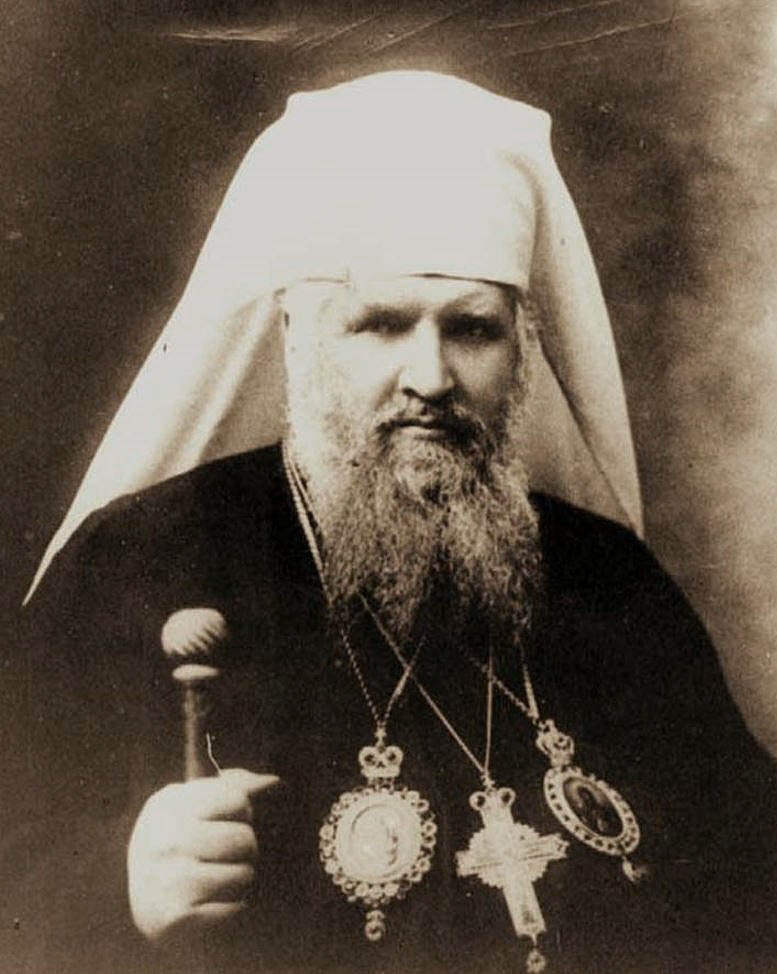
Sheptytsky's attitude to the Jewish people and anti-Semitism in the light of new documents
Andrei Sheptytsky's personality was formed in the 1870s and 1880s within the Polish aristocratic milieu of Austro-Hungary and the milieu of the Roman Catholic clergy. Neither of these environments was well disposed toward the Jewish people. Sheptytsky, however, had been interested in Jewish culture since his youth, and he even studied Hebrew. As an aristocrat, he sought to uphold friendly relations with the leaders of the Jewish community. However, this does not mean that the metropolitan was free of those prejudices that were rooted in the Catholic Church's generally accepted teachings about the Jews' collective responsibility for the killing of Christ.
In 1918 Sheptytsky donated a considerable sum of money to help the victims of the anti-Jewish pogrom that occurred in Lviv in November 1918. His archive contains greetings from well-known representatives of the Jewish community and the rabbinate. Among the business partners of the archdiocese's Directorate of Economic Affairs were quite a few Jewish businessmen, for example, the owners of woodworking plants.
In the late 1920s, Sheptytsky maintained contact with the Friends of Israel Society, which was composed of representatives of the Catholic clergy from various countries. The leaders of this society sought to change Catholic attitudes toward the Jewish people. They prepared and submitted to the pope a draft document outlining changes to the Holy Friday liturgy. In particular, they proposed removing the words referring to the Jews' collective responsibility for Christ's crucifixion. The society was banned in 1928, and its organizers were punished. It is difficult to state unequivocally that Sheptytsky was a member of this society given the fact that there is very little extant information about its operations (brief information items about its activities surfaced only after the opening of the Vatican archives concerning the period of 1922–1938).
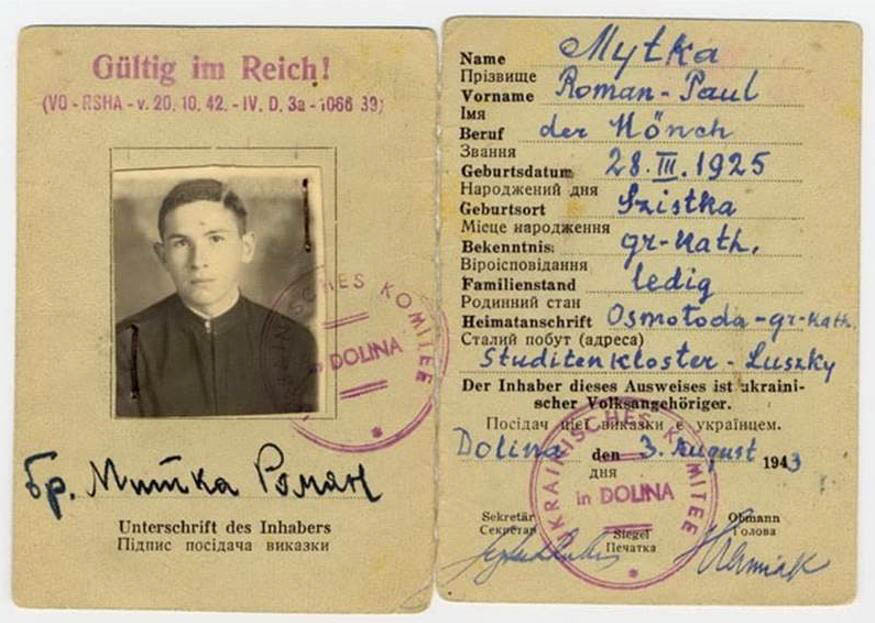
Sheptytsky was critical of the rise of anti-Semitism in interwar Poland. In a letter to Pope Pius ХІ sent in 1938, he referred to cases of Jews being beaten and the destruction of Jewish property in the Lviv archdiocese. The metropolitan noted that the initiators and perpetrators of these criminal acts were Polish students. He had addressed his faithful back in 1936 with a message about the rising level of anti-Semitism and calls to push Jews out of the country's economic and civic life — appeals that frequently appeared in the Polish press:
"Dear Brothers! I must warn you very decisively, seriously, and before God against any acts of violence under the guise of so-called anti-Semitism that is being so strongly promoted by part of the Polish press. Obviously, we can work in such a way as to provide for ourselves in economic life and trade, and not be dependent. We do not need to struggle against or hate Jews, still less do we need to do wrong to them. And the wrongdoing would be all that we would consider to be a wrongdoing if someone did this to us. Love of one's neighbor obliges us toward all our neighbors and all the peoples of the world. Divine law commands us to avoid all wrongdoing to our neighbors, and each person knows that it would be an injustice to beat, kill, slander, harm our neighbor's health and property, set his house on fire, destroy his belongings. All this is against Divine law; it is a sin, it is a mortal sin, whether it be committed against Christians or against non-Christians. That is why I very much caution you against inciting such acts of violence." [1]
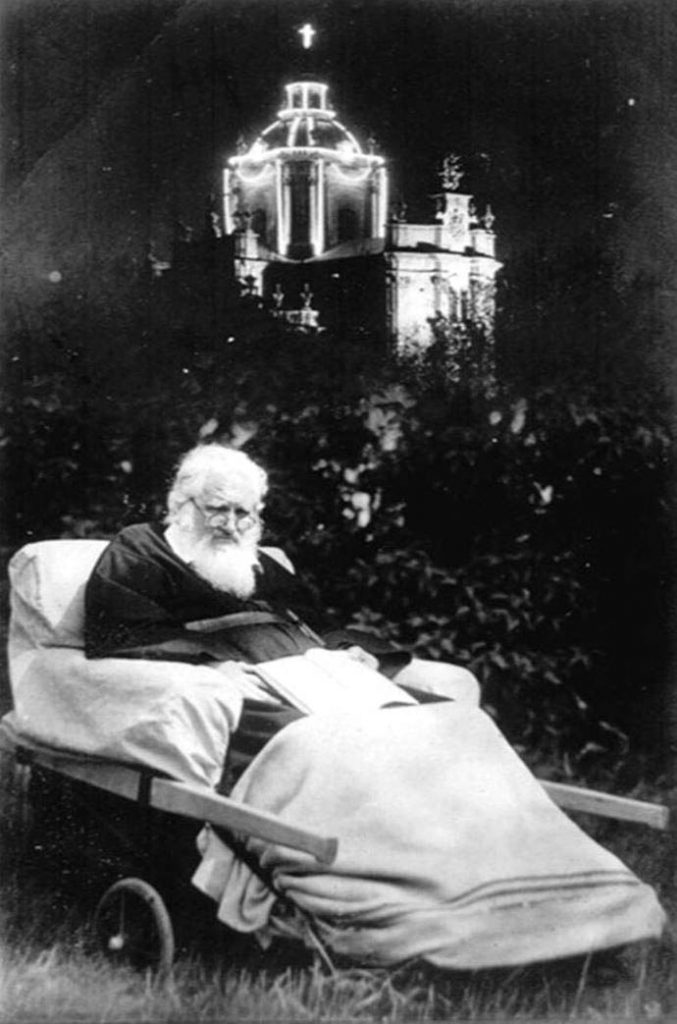
Archival documents and their contextualization
In the last two decades, a considerable number of Ukrainian archival documents have become accessible to researchers. In 2005–2007 historians obtained unimpeded access to documents stored in the Vatican archives for the period spanning the years 1922–1938, and this year — to materials dating to the period of the Second World War. Several previously little-known documents deserve more detailed attention.
We know that on 1 July 1941, Sheptytsky wrote a pastoral letter entitled "To the Ukrainian People." This letter was viewed as a gesture of welcome to the German army, which had entered the territory of Ukraine. The original and typescript drafts of this letter are held at the Central State Historical Archives of Ukraine in Lviv (TsDIAL). By that time, Sheptytsky had already lost the ability to write (as a result of a stroke that he suffered in 1931). The metropolitan dictated his letters and other texts, and it was his secretaries or his brother, Klymentii/Casimir Sheptytsky, who took notes. However, he would cross things out, indicate what had to be rewritten, and then approve the final version with his signature (most often with the letter "A"). He also approved with his signature copies of important letters sent to addressees. In the first paragraph of this letter, he welcomes the proclamation of a Ukrainian state. However, it is evident from the original text that the word "independent" was added, in other words, independent state. The penultimate paragraph contains the following: "We greet the victorious German army as the liberator from the enemy. We offer due obedience to the established authorities." On the copies (both the original and the typescript), after the word "established," the metropolitan crossed out the phrase "leader of the German people." In other words, initially, the sentence looked like this: "We offer due obedience to the civil authorities established by the leader of the German people." However, the metropolitan twice crossed out the words about the government of the leader of the German people, Adolf Hitler. It is likely that Sheptytsky did not wish to mention Hitler publicly and regarded the German authorities as a temporary military administration, which by its nature is an occupying one. It is possible that he assumed that the Germans were interested in the creation of an independent Ukrainian state. The final paragraph talks about what the Ukrainian state was supposed to be like and on which principles it was to implement governance: "from the [Ukrainian — L.H.] government we expect wise and fair leadership and instructions that would reckon with the interests and good of all who reside in Our Land without distinction of the confession, nationality, or social stratum to which they belong." This last sentence reveals that Sheptytsky saw the Ukrainian state as independent and democratic. In this case, the drafts allow us to understand the hidden sense of the text of this letter.
The context of the writing of this letter is also important. Sheptytsky had been misled by several individuals from his circle, first and foremost by Rev. Hrynokh, who convinced him that the Germans supported the creation of an independent Ukrainian state. He convinced Sheptytsky that the Ukrainian government proclaimed by Yaroslav Stetsko would represent all political parties and forces, not just the Organization of Ukrainian Nationalists (Banderites; OUN[B]). This priest worked closely with the OUN(B) and perhaps deliberately manipulated Sheptytsky on the day after German troops entered Lviv. In writing this letter, the metropolitan was not sufficiently apprised of what was happening outside the borders of the USSR.
It is entirely possible that not all the documents previously attributed to Sheptytsky were written and signed by him personally. For example, Sheptytsky's letter "To Farmers," in which the metropolitan encourages peasants to ensure the provisioning of the German army, has often been mentioned and published. This letter was published by the Ukrainian press in July 1941. In the notes made by the metropolitan's secretary, we find facts proving that the metropolitan did not write it. The metropolitan's Ordinariate (Secretariat) protested to the newspaper Ukraїns′ki shchodenni visti (Ukrainian Daily News) about the falsification, claiming that Sheptytsky had never written any such letter. Another of the secretariat's documents attests that the German army command had requested that he write such an appeal. Sheptytsky instructed his priests to read out the appeal of the German economic commission to the peasants. However, he emphasized that it should be read-only after the conclusion of the liturgy and outside of churches. Furthermore, Metropolitan emphasized in his document that peasants, only after meeting the needs of their own families, should "help the German army by selling their food to so-called collection points." [2] But the newspaper that published Sheptytsky's letter "To Farmers" refused to publish a correction, as the Ordinariate demanded.
The above-mentioned documents — the letter dated 1 July 1941 and the letter "To Farmers" — significantly emend the view, formed over many decades, of Sheptytsky's attitude to the German occupying regime in July 1941. Regardless of the fact that he truly considered the Germans as "liberators" from Bolshevism, the metropolitan was none too friendly to them. Sheptytsky regarded the twenty-two months of Soviet occupation, from 1939 to 1941, as the worst that could happen to him and the UGCC. He was convinced that under Soviet rule, the Church was doomed to perdition (about which he wrote to the Vatican). That is why perhaps at the early stage of the occupation, he perceived the Germans as liberators.
Sheptytsky and the anti-Jewish pogroms of the summer of 1941
We know from Kurt Lewin's memoirs that on 1 July 1941, a meeting took place between the metropolitan and Rabbi Ezekiel Lewin. Considering the danger, Sheptytsky invited the rabbis to stay in his residence. The metropolitan knew about the pogroms in the city and the active participation of Ukrainians in them. Initially, he treated them as a manifestation of violence on the part of urban riffraff. However, the minutes of archdiocesan councils (led by the metropolitan) confirm that in late July 1941, Sheptytsky became gravely ill and did not leave his room. For nearly all of August, he did not take part in the work of an archdiocesan council that took place in the metropolitan's palace. The 31 August session of the archdiocesan council was the first time after his illness that the metropolitan addressed his priests. He declared that he was working on a pastoral letter against the sin of murder. At the session, he asked all the priests to warn their faithful not to participate in any actions that might lead to murder. Sheptytsky believed that a "terrible savagery" (loss of human form) was spreading among his flock.
On 5 October 1941, the metropolitan signed the text of the draft of his letter "About Murder," which was read out to all the priests attending the council. This document is somewhat similar to the letter "Thou Shalt Not Kill," which was published and promulgated in November 1942. But in this text, there is a lengthy passage in which Sheptytsky reflects on the problem of the state's (un)acceptable use of the death penalty. In keeping with the metropolitan's position, it is the duty of the state to ensure fair and independent judicial proceedings. However, even if a crime is proved by fair justice, "the state authorities, even though they can punish the crime, have no right punish it by death." This text of Sheptytsky's, as well as his letter to the clergy of his archdiocese, may have been determined by the killing of Jews in the summer of 1941.
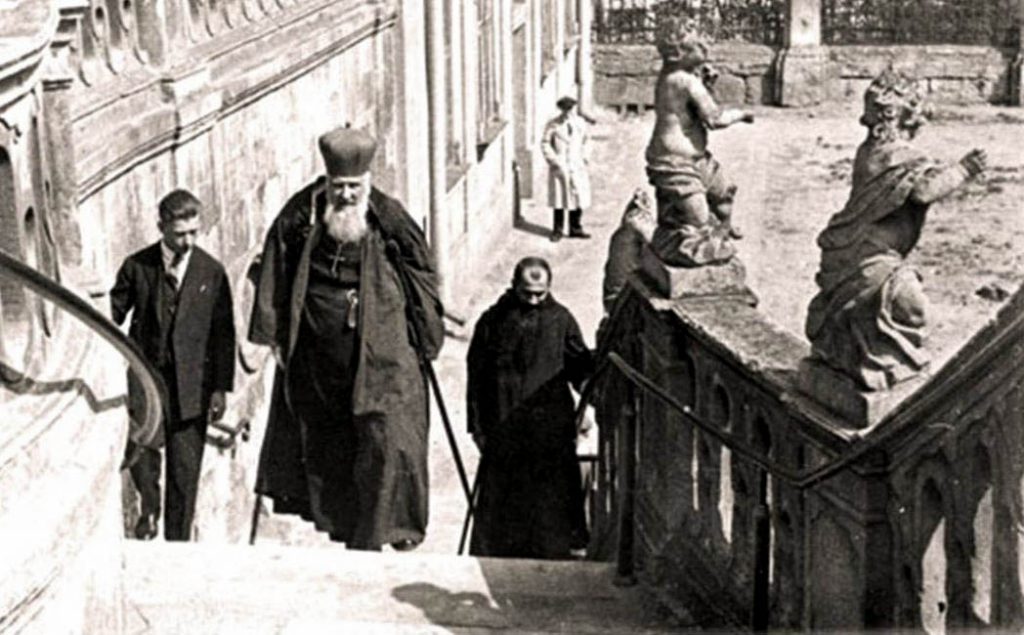
On 15 November 1941, Sheptytsky instructed his priests to caution all young people in their flocks who are serving in the police or who want to work for it "not to accept duties that go against Divine law." The metropolitan believed that young Ukrainians working for the police might be given orders to take part in crimes and sinful actions. He also noted that he could not issue a written directive of this kind. He was probably referring to the participation of members of the Ukrainian auxiliary police in anti-Jewish actions.
These documents prove that by the fall of 1941, Sheptytsky was stripped of his illusions concerning the Third Reich. This may have happened under the influence of the anti-Jewish violence that took place in the summer and fall of 1941. The metropolitan sought to counteract the dehumanizing influence of Nazi ideology, but he had a clear understanding of his position: His actions or ill-considered statements could jeopardize the church organization that he headed.
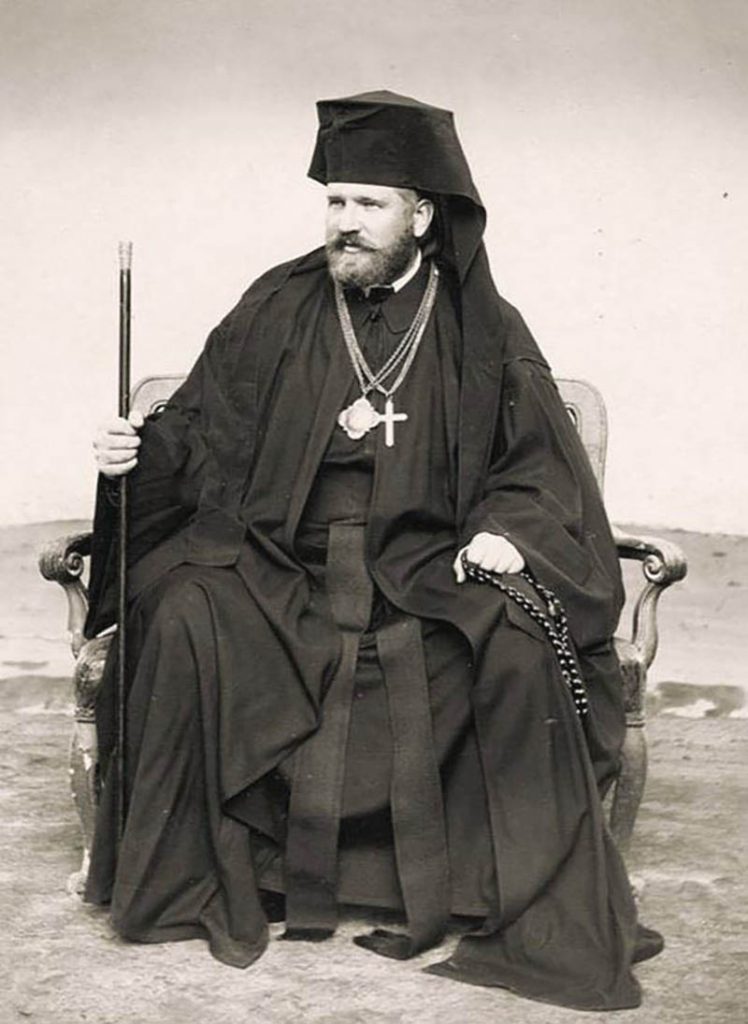
Documents from the newly opened Vatican archives shed light on how Sheptytsky attempted to inform the Apostolic See about the killing of Jews. The metropolitan was receiving more information about the brutal mass killings taking place in the lands of occupied Ukraine. It is likely that he anticipated a response from Pope Pius XII. In March 1942, Sheptytsky wrote a powerful letter to the pope. Among his documents held at TsDIAL is an incomplete French-language draft of this document. The metropolitan writes in particular about the killing of 130,000 Kyivan Jews. He also mentions the participation of the Ukrainian police in the mass executions of Jews. It is possible that this letter was never sent to Rome, or it never reached its destination. To this day, it has never been found in the Vatican archives.
The metropolitan's next letter to the pope, dated late August 1942, is regarded by researchers who study the Vatican and the Holocaust as well as the Vatican and the Second World War as one of the first extensive reports about the Holocaust.
Here are some of the metropolitan's reflections from this letter: "They consider all Jews as military opponents and are carrying out massacres in which thousands of Jews are dying together with their wives and children; for example, in all the large cities of Ukraine, they have killed all the Jews who did not escape ahead of their army; in Kyiv — nearly 130,000, according to descriptions that appear reliable; a similar number in other cities." "Jews are the primary victims…. The number of Jews killed in our small land probably exceeds two hundred thousand by now." [3]
In a letter to Pope Pius XII dated 29–31 August 1942, Sheptytsky harshly criticizes the German occupying regime (despite the real risk that the letter might end up in the hands of the Gestapo). The metropolitan regarded the German regime as worse than the Bolshevik one, "almost diabolical": "It is a system of lies, duplicity, injustices, robberies, a caricature of all the ideas of civilization and order. It is a system of excessive egoism […] of almost insane national chauvinism, hatred of everything that is honest and beautiful…." [4]
As attested by recent findings made by German historians, the pope was advised to treat with caution Sheptytsky's statement about the Germans' horrific crimes against the Jewish people. According to these "recommendations," Sheptytsky, as a "person of the East" [Orientali in the Vatican original — L.H.], was somewhat exaggerating. It is worthwhile noting that relations between Pope Pius XII (Eugenio Pacelli) and Andrei Sheptytsky markedly deteriorated as early as the end of 1938–early 1939. The pope was offended at the metropolitan for his explicit accusations of incompetence on the part of Vatican diplomats in the aftermath of the 1938 additional agreement between Poland and the Holy See.
However, almost immediately after receiving Sheptytsky's letter, the pope had several meetings with the American diplomat Myron Taylor, who also possessed information about the mass killings of Jews, similar to the metropolitan's. The metropolitan's private correspondence reveals that Sheptytsky received information from Rome about a private meeting (or meetings) between the pope and Myron Taylor in the fall of 1942. In other words, he may have known that his information was being verified against other sources.
Sheptytsky's letter to the pope was first published in the 1960s. German researchers did not "discover" this letter in March 2020, as was reported in the American, German, and Israeli media. The letter had previously been known only to a narrow circle of researchers. Initially, it was published in its original French version and later appeared in a Ukrainian translation.

The Vatican archives also help to shed light on Sheptytsky's letter to Hitler, written in mid-January 1942. The former KGB archives contain two more letters from Sheptytsky to Hitler. However, in order to be authenticated, they require serious analysis because other archival collections do not contain either copies or drafts of these two letters.
A considerable number of scholarly and semi-popular publications cite information about the fact that the metropolitan wrote a letter to Hitler in January 1942. Three archival repositories contain copies of this letter: the original as well as authentic photocopies that were made of the original. One of these photocopies is held at the Vatican archives. It should be noted that Sheptytsky did not write (or dictate) this letter. The text was written in Berlin by the members of the Melnyk faction of the OUN. It was signed by five prominent Ukrainian figures. Sheptytsky was the honorary co-head of the Council of Seniors, or the Ukrainian National Council. That is why the representatives of the OUN(M) requested his signature. The first text of the letter was signed by Professor M. Velychkovsky, co-head of the Ukrainian National Council in Kyiv. Then the letter wended its way through Lviv and Warsaw to Berlin. After 28 January, it was delivered to Hitler's Chancellery.
The letter is focused on several main topics. The authors of the letter entertained great hopes that Nazi Germany would be able to smash Bolshevik Russia, and in the name of all Ukrainians, they expressed the desire to take part in an armed struggle, together with the Germans, against the Bolsheviks. But at the beginning of the letter, the authors express criticism of the actions taken by the German occupation administration in Reichskommissariat Ukraine: "In the central Ukrainian lands Ukrainians have been deprived of all opportunities for cultural and national development... schools are being closed; scholarly institutions are not permitted to function…" "The German authorities have suspended the activities of the Ukrainian National Council [in Kyiv — L.H.]." [5] Such criticism and complaints were a bold move on the part of these Ukrainian figures. By that time, information about the repressions of the Polish elite, intelligentsia, and civic figures was already well known.
Nevertheless, the signatories/authors of the letter deemed it proper to dismantle the Versailles system. In the name of the Ukrainian people, they expressed readiness to cooperate with Germany for the sake of "establishing a new order in Ukraine and in all of Eastern Europe." [6]
However, the letter talks about the desire to cooperate for the sake of a joint victory over Bolshevism. The next lines in the letter make it clear that its authors imagined this "new order" in Ukraine somewhat differently than the Reich leadership.
The letter does not contain any words that would demonstrate the authors' adherence to the ideology of National Socialism. However, it does contain a considerable number of expressions that confirm the pragmatic calculation of its authors, who were seeking to propose their services to the occupier in exchange for fundamental changes to Germany's policy in Ukraine. They believed that Ukrainians would fight the Bolsheviks more vigorously if they could be certain about the proper future development. Therefore, they were asking Hitler "to take into consideration the recognition of Ukraine's right to independent existence." [7] The letter's German addressees — high-ranking members of the Gestapo and the Reich Ministry for the Occupied Eastern Territories — did not interpret it as a manifestation of loyalty to the interests of the "Great Reich." It is likely that this letter led to or, rather, served as the pretext for the order issued on 23 February 1942 about the disbandment of the Ukrainian National Council.
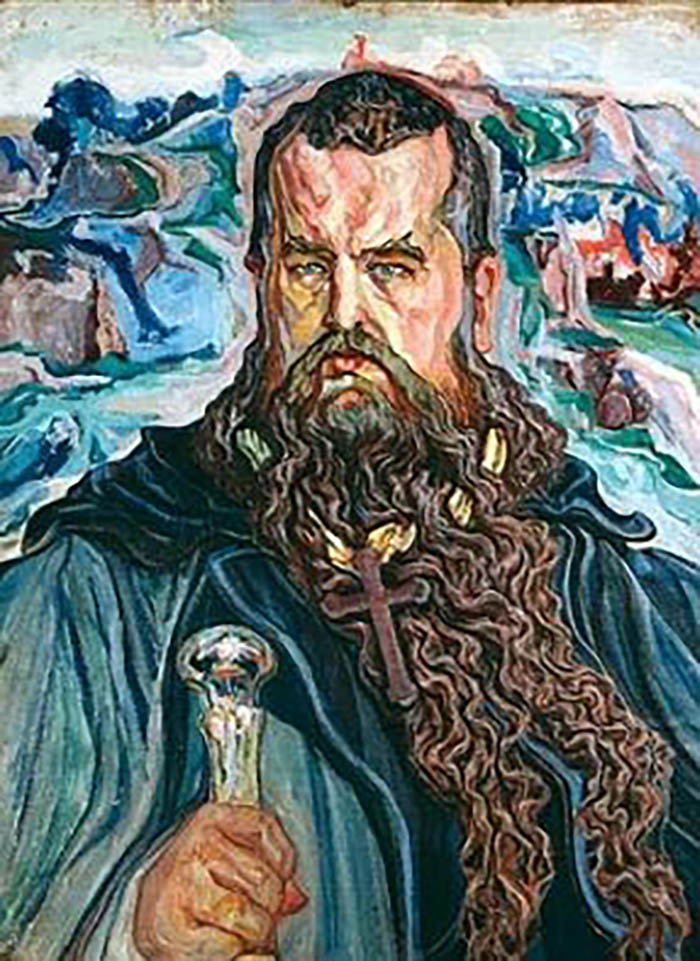
The first signatory at the end of the letter was Andrei Sheptytsky. However, it is unlikely that this signature could have been affixed by the metropolitan. For many years Sheptytsky had been unable to write legibly, yet the signature on the letter is clear and distinct. It features the metropolitan's full name and title (that is, four words). Sheptytsky customarily signed documents only with one or two letters. The photocopy of the letter and the metropolitan's signature were meticulously studied at the Congregation for the Oriental Churches. On the basis of this letter, the Polish diplomat Kazimierz Papée, a representative of the Polish government in emigration, accused Sheptytsky of treason against Poland and of collaborating with the enemy. The head of the Congregation, Cardinal Tisserant, in a letter to the Polish ambassador, suggested that the signature could not belong to Sheptytsky. "Previously, I never saw such a signature." Tisserant and Sheptytsky had exchanged dozens of letters during the war. Tisserant was very familiar with Sheptytsky's state of health since the 1930s. Owing to the absence of facts, we can only assume how the metropolitan's signature ended up under the letter closing. Sheptytsky may have refused to affix his signature because he disagreed with the content of the letter, or he believed that it would compromise him. Thus, it is entirely likely that someone else affixed the signature in the name of the metropolitan. It is also possible that Sheptytsky's state of health did not permit him to read and/or sign this letter. In other words, the circumstances surrounding the signing of this letter have not been ascertained. However, it may be stated with certainty that Sheptytsky himself did not affix his signature to that letter to Hitler. In the past, not a single historian has ever broached or examined the question of the authenticity of the metropolitan's signature under this letter, which was regarded as one of the most important pieces of evidence pointing to his collaboration.
Another context is no less important. Sheptytsky wrote letters to Himmler, Ribbentrop, Khrushchev, Stalin, and the [Soviet — Ed.] prosecutor Vyshinsky. Why did he do this? Perhaps the metropolitan believed that he could exert his influence over these individuals and somehow improve the situation of his faithful. In these letters, he is nearly always requesting something. On one occasion in 1940, Khrushchev even fulfilled his request. In general, Catholic teachings and practices recommend to heads of Particular Churches to maintain satisfactory relations with state authorities in order to safeguard the functioning of the church and to champion the interests of the faithful.
Sheptytsky was not a political figure. He was a priest and a leader of a community of his faithful. He cannot be compared to the president of a state, the head of a government, or a Member of Parliament. Thus, the metropolitan's most important texts were not his letters to state officials but his pastoral letters to the faithful. They became his best weapon, as Sheptytsky was a masterful writer of extraordinarily comprehensible and felicitously worded pastoral letters and sermons.
The pastoral letters "On Mercy" (published in June 1942) and "Thou Shalt Not Kill!" are a kind of mega text; they have an extraordinarily profound meaning and reflect the tragic nature of the horrific events that were happening in Sheptytsky's archdiocese. These texts require deep contextual analysis.
Thou Shalt Not Kill! (November 1942)
An important feature of the pastoral letter "Thou Shalt Not Kill" (November 1942) is the metropolitan's rejection of the right of state authorities to take away human life: "This means that the foundation of all social order, after the acceptance of and obedience to authority, must be the inviolable sanctity of human life." [8] These words were a challenge to both Bolshevism and Nazism. Sheptytsky believed that no political circumstances could justify murder: "Those who delude themselves and others that political killing is not a sin do so in a strange manner…" [9]
Sheptytsky also categorically rejected racial theory, popular in Nazi, fascist, and radical nationalist ideologies. In his pastoral letter "On Mercy" (June 1942), Sheptytsky noted: "For every neighbor is a brother, a member of a human family that has grown from the family of the first man." [10]
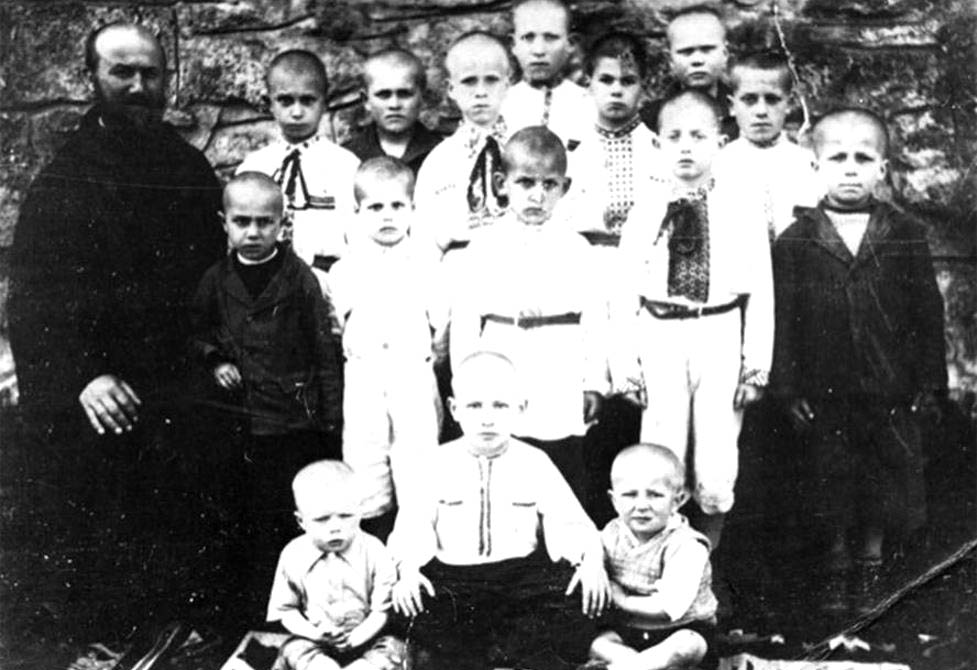
The content of this sentence is extraordinarily profound. The metropolitan is saying that all people, irrespective of the color of their skin, faith, or ethnic origin, are members of one community. The metropolitan wrote that one's neighbors are not just people from the same family, group, nation, or faith, but also "strangers, infidels, atheists, and enemies." [11]
It must be acknowledged that the metropolitan does not refer to the Jews in any of his pastoral letters. If he had written openly about them, these texts might never have been published in the Lvivski archieparchialni vidomosti (Bulletin of the Archdiocese) and would not have been read during liturgies in Greek Catholic churches. Such were the tragic realities of the time.
This paper examines examples of only a handful of these little-known documents. They help us gain a better understanding of Sheptytsky's activities during the Shoah. There are many more such documents that shed light on very complex matters, for example, the metropolitan's attitude to the Waffen-SS Division Galizien. Some important issues require additional study.
In conclusion, it must be emphasized that Sheptytsky could not leave behind written mentions of what he was doing, thinking, or feeling during that terrible period. This would have been dangerous both to him and those whom he was helping.
On one of his postcards, he wrote or dictated words that, at first glance, sound incomprehensible. On this postcard dated 13 August 1942, the metropolitan, in cryptic fashion, informs Yosyf Slipy (who was not in Lviv at the time) "…that something is happening in the city that has never happened before, and it is supposed to last ten more days." The message was likely about the largest operation to deport the Jews of Lviv en masse to the death camps, which took place from 10 to 23 August 1942. At the time, nearly 60,000 Lviv Jews were killed. For the metropolitan, the August operation was an unprecedented horror that had never been seen in Lviv.
Sheptytsky's thoughts and actions were a ray of light trying to break through the darkness.
This paper was delivered at the international seminar on the Holocaust and the Holodomor, "A Particle of Light Dispels the Greatest Darkness," which took place on 7–10 December 2020.
The photographs featured in this article are from the author's private archive as well as open sources.
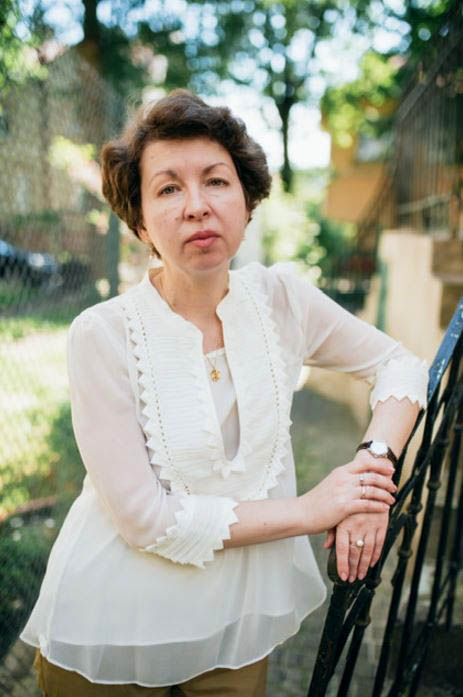 About the author
About the author
Liliana Hentosh is a Candidate of Sciences in History; senior scholarly associate of the Institute of Historical Research at Ivan Franko National University of Lviv, and scholarly secretary of the editorial board of the journal Ukraina Moderna. She is the author of dozens of articles on the history of the Roman Catholic and Greek Catholic churches and interconfessional relations during the first half of the twentieth century. She is the author of a monograph about the Vatican’s “Eastern policy”: Vatykan ta vyklyky modernosti: Skhidnoievropeis′ka polityka papy Benedykta ХV ta ukraїns′ko-pol′s′kyi konflikt u Halychyni (1914–1923). She has devoted many years to researching the life and activities of the metropolitan of the Ukrainian Greek Catholic Church, Andrei Sheptytsky, and is the author of a monograph Mytropolyt Sheptyts′kyi: 1923–1939: Vyprobuvannia idealiv. Ms. Hentosh is writing a book about Metropolitan Sheptytsky's activities during the Second World War (one chapter will be devoted to the metropolitan's activities during the Holocaust). She is a permanent summer-school lecturer at the Ukrainian Catholic University.
[1] Metropolitan Andrei's pastoral letter to the clergy and the faithful, "Do tykh, shcho na Paskhu ne prychashchalysia," August 1936, vol. 2, p. 335.
[2] Iz rozporiadzhen′ mytropolychoho ordynariatu, no. 65.
[3] The author's translation of a French-language manuscript discovered in the Central State Historical Archives of Ukraine in Lviv (hereafter cited as TsDIAL).
[4] Cited according to the Ukrainian-language publication in the collection of documents entitled Mytropolyt A. Sheptyts′kyi: zhyttia і diial′nist′. Dokumenty i materialy, 1899–1944, vol. 2, bk. 2, Tserkva і suspil′ne pytannia, ed. Andriy Kravchuk (Lviv: Misioner, 1999), p. 985.
[5] Cited according to the Ukrainian-language publication of a letter in the collection of documents Ukraїns′ka suspil′no-politychna dumka v XX st., ed. R. Sol′chanyk [Solchanyk] and T. Hunchak [Hunczak], vol. 3 (New York, 1983), p. 45.
[6] Ibid., 3: 46.
[7] Ibid.
[8] Cited in Mytropolyt A. Sheptyts′kyi, vol. 2, bk. 1, p. 262.
[9] Ibid.
[10] Ibid., p. 257.
[11] Ibid., p. 255.
The accuracy of the facts and the correctness of quotations cited in this article are the sole responsibility of the authors of the texts.
Originally appeared in Ukrainian @Ukraina Moderna
This article was published as part of a project supported by the Canadian non-profit charitable organization Ukrainian Jewish Encounter.
Translated from the Ukrainian by Marta D. Olynyk.
Edited by Peter Bejger.
NOTE: UJE does not necessarily endorse opinions expressed in articles and other materials published on its website and social media pages. Such materials are posted to promote discussion related to Ukrainian-Jewish interactions and relations. The website and social media pages will be places of information that reflect varied viewpoints.







